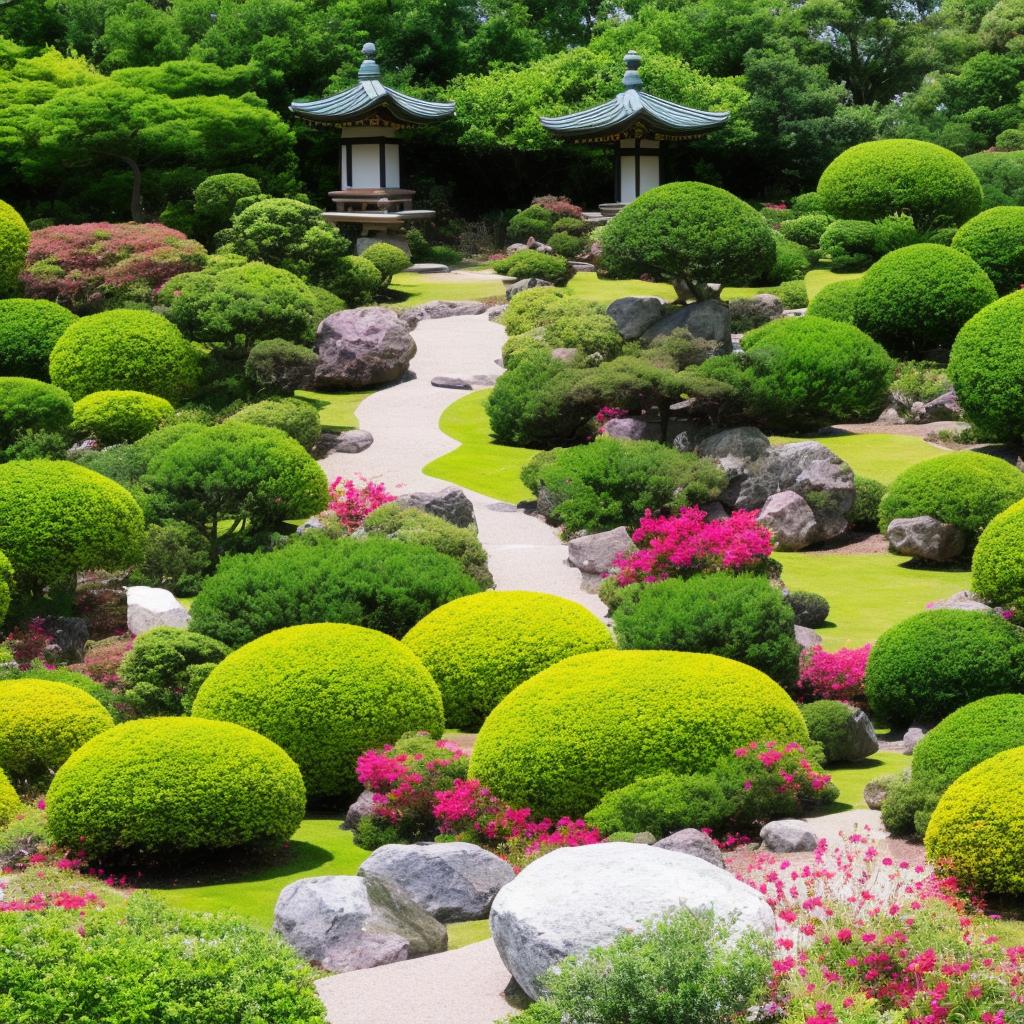The art of Japanese garden design is a time-honored tradition that celebrates simplicity, harmony, and tranquility. Drawing on principles of Zen philosophy, these meticulously crafted spaces invite visitors to experience a sense of peace and mindfulness in the midst of nature. In this article, we will explore the history, techniques, and principles that have shaped the serene beauty of Japanese gardens, and discover the profound wisdom behind their timeless allure. Join us on a journey into the Zen of Japanese garden design.
– Achieving Harmony through Traditional Elements
Japanese garden design is a profound art form that encompasses various traditional elements to achieve a sense of harmony and tranquility. One key aspect of this design philosophy is the use of rocks strategically placed in the garden to symbolize mountains, islands, or waterfalls. These rocks not only serve a decorative purpose but also create a sense of balance and serenity within the space.
Another essential element in Japanese garden design is the use of water features such as ponds, streams, or water basins. Water is believed to symbolize life, purity, and renewal in Japanese culture, and incorporating it into the garden design can help create a sense of calm and peacefulness. By combining rocks, water, plants, and other natural elements, Japanese garden designers are able to create a harmonious and Zen-like environment that promotes relaxation and contemplation.

- Embracing Simplicity and Minimalism in Design
Japanese garden design embodies the essence of simplicity and minimalism, creating tranquil spaces that inspire a sense of peace and harmony. The principles of Zen philosophy are evident in every aspect of these gardens, from the carefully placed rocks and gravel to the precisely pruned trees and shrubs. Each element serves a purpose, contributing to the overall balance and beauty of the space.
One key principle of Japanese garden design is ma, the concept of negative space. This idea emphasizes the importance of emptiness and open areas in a garden, allowing for contemplation and a sense of calm. By incorporating empty spaces into the design, the garden creates a sense of balance and harmony that is essential to its overall beauty. The use of natural materials, such as wood, stone, and bamboo, further enhances the simplicity of Japanese garden design, connecting the space to the natural world.
– Creating a Tranquil Atmosphere with Water Features
When it comes to creating a tranquil atmosphere with water features in your garden, there is no design quite as serene and peaceful as the traditional Japanese garden. Japanese garden design has been perfected over centuries, with a focus on simplicity, harmony, and a deep connection to nature. By incorporating water features such as koi ponds, bamboo fountains, and stone basins, you can transform your outdoor space into a peaceful sanctuary that promotes relaxation and mindfulness.
One key element of Japanese garden design is the use of natural materials such as smooth river rocks, bamboo, and reclaimed wood to create a sense of balance and harmony. Water features are strategically placed to reflect the surrounding landscape and invite a sense of calm. The gentle sound of flowing water can drown out noise pollution, creating a peaceful oasis where you can escape the stresses of daily life. To truly capture the essence of a Japanese garden, consider adding a traditional wooden bridge over a tranquil pond, or a Zen rock garden for contemplation and reflection.
– Incorporating Natural Elements for Balance and Serenity
Japanese garden design is a practice deeply rooted in incorporating natural elements to create a harmonious and tranquil space. By strategically placing elements such as rocks, water features, and plants, these gardens strive to evoke a sense of balance and serenity. The careful arrangement of these elements is meant to reflect the beauty and simplicity of nature, helping visitors find inner peace and a connection to the world around them.
One key principle in Japanese garden design is the concept of “wabi-sabi,” which embraces imperfection and impermanence. This philosophy is reflected in the use of weathered stones, moss-covered lanterns, and asymmetrical plantings. By embracing the natural cycle of growth and decay, these gardens remind us of the fleeting beauty of life and encourage us to appreciate the present moment. Through the mindful arrangement of elements and attention to detail, Japanese gardens offer a retreat from the chaos of the modern world, inviting visitors to slow down and find a sense of calm.
In Summary
In conclusion, the Zen of Japanese garden design offers a serene and harmonious retreat that fosters a deep connection with nature and inner peace. The meticulous attention to detail, the use of natural elements, and the balance of simplicity and complexity are all key elements that define the beauty of these gardens. Whether you are strolling through a traditional tea garden or meditating in a contemporary Zen garden, the experience is sure to leave you feeling rejuvenated and inspired. So, next time you find yourself in need of a moment of tranquility, consider immersing yourself in the timeless elegance of Japanese garden design.




